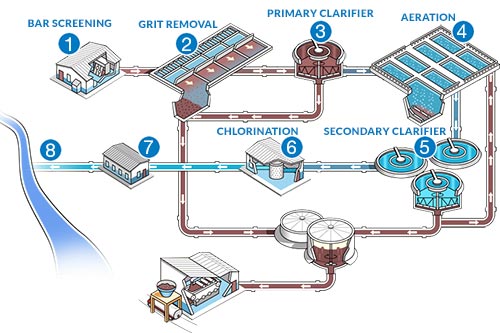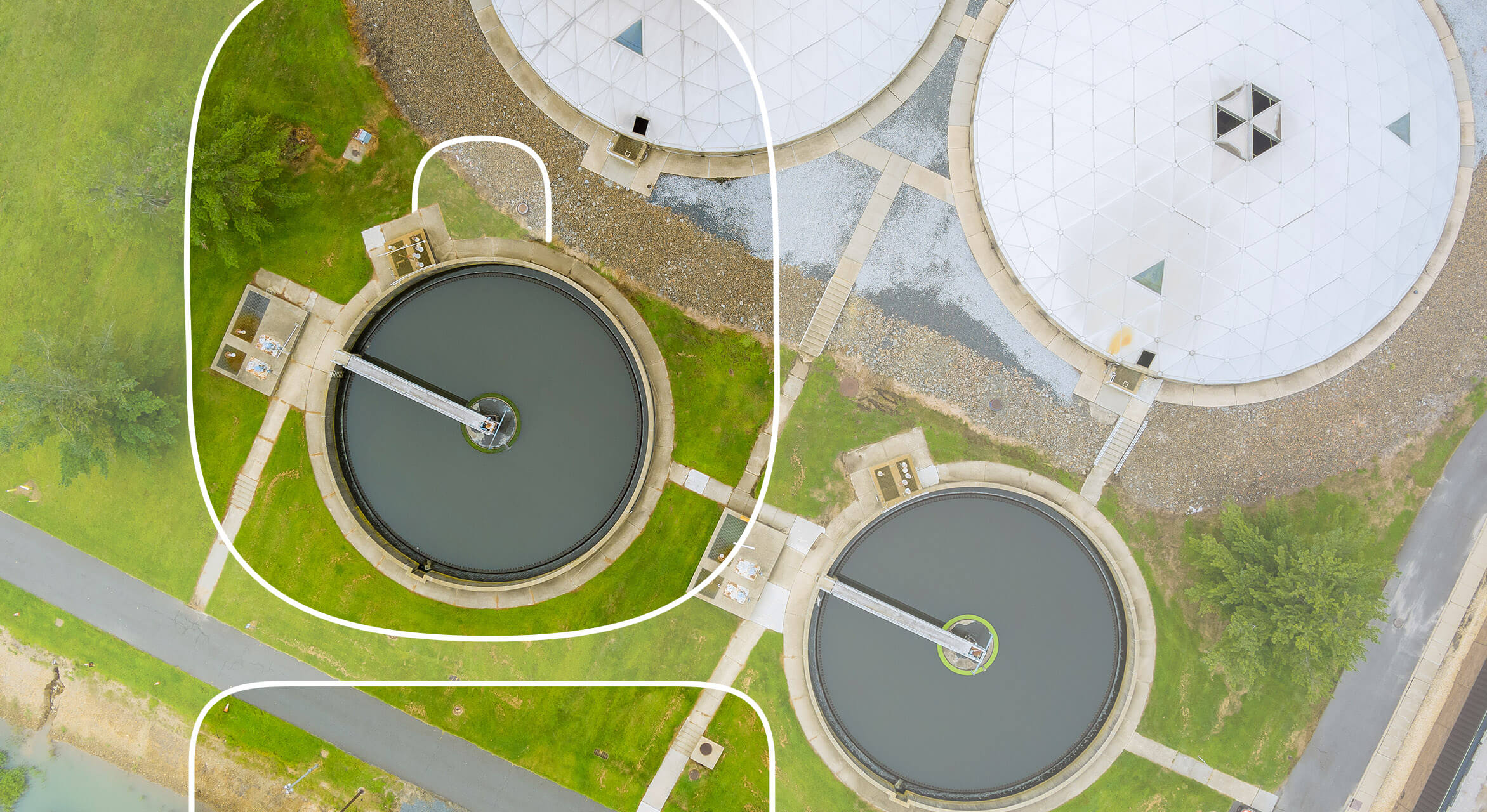How Modern Wastewater Treatment Technologies Help the Ecosystem
How Modern Wastewater Treatment Technologies Help the Ecosystem
Blog Article
Understanding Wastewater Therapy Processes and Their Ecological Effect
The intricacies of wastewater therapy procedures play a crucial duty in mitigating environmental obstacles associated with water pollution. Each stage, from initial to advanced therapies, is made to resolve certain pollutants, ultimately securing both public health and wellness and aquatic ecosystems. Regardless of technological improvements in treatment performance, substantial obstacles linger, consisting of the management of residual contaminants and the effects of nutrient drainage. As we explore the intricacies of these procedures, it becomes essential to question how far existing approaches can advance to satisfy the growing demands of sustainability and ecological preservation.
Overview of Wastewater Treatment
Just how is wastewater transformed into a secure source for the setting? Wastewater treatment is a vital process designed to get rid of impurities from used water, thus securing public health and securing communities. This procedure starts with the collection of wastewater from household, commercial, and commercial resources, which is after that directed to therapy facilities.
At these centers, numerous physical, chemical, and organic techniques are used to treat the wastewater. Preliminary testing gets rid of large particles, complied with by sedimentation to different larger solids. Consequently, organic treatments, such as triggered sludge processes, utilize microorganisms to damage down raw material. These approaches not just minimize pollutant degrees yet additionally assist in the recuperation of important nutrients.
The dealt with effluent can be securely discharged right into all-natural water bodies or reused for irrigation and commercial functions, advertising source conservation. Additionally, the treatment process produces biosolids, which can be repurposed as plant foods or soil changes, additionally improving sustainability.
Stages of Treatment Processes
The wastewater treatment procedure generally includes three main phases: preliminary, primary, and additional treatment. Each phase serves a distinctive role in lowering the contaminant tons and making sure the effluent satisfies environmental criteria prior to discharge.

The main therapy phase concentrates on the physical separation of suspended solids from the wastewater. Through sedimentation, heavier bits work out at the end of sedimentation storage tanks, forming sludge, while lighter materials, such as oils and oils, float to the surface area and are skimmed. This procedure considerably reduces the organic and not natural load in the wastewater.
Second therapy is an organic process targeted at more reducing the focus of raw material. Various methods, consisting of activated sludge systems and flowing filters, make use of microorganisms to metabolize organic pollutants. This phase is vital for attaining the required biochemical oxygen demand (BOD) reduction, inevitably resulting in cleaner effluent prepared for discharge or more treatment. Each phase is vital in protecting environmental and public health.

Advanced Treatment Technologies
Following the secondary therapy processes, advanced treatment innovations play a vital duty in additional boosting the top quality of dealt with wastewater. These innovations are made to remove residual contaminants that are not efficiently removed throughout primary and secondary treatments, making certain the effluent fulfills strict regulative standards.
Amongst the commonly used advanced treatment techniques are membrane layer filtering, reverse osmosis, and progressed oxidation procedures. Membrane purification, including microfiltration and ultrafiltration, works in dividing fine bits, virus, and colloids from the water (Wastewater). Reverse osmosis uses semi-permeable membrane layers to get rid of liquified moved here solids, resulting in top notch water suitable for various applications
Advanced oxidation procedures (AOPs) use solid oxidants to degrade organic pollutants, including pharmaceuticals and personal treatment items that are immune to standard therapy. These approaches improve the biodegradability of complex substances, facilitating their removal.
An additional considerable technology is making use of organic nutrient removal procedures, which specifically target nitrogen and phosphorus, avoiding eutrophication in receiving water bodies. On the whole, sophisticated treatment modern technologies are vital for attaining higher degrees of filtration, promoting water reuse, and safeguarding public wellness while addressing the difficulties connected with wastewater administration.
Ecological Advantages of Treatment
Various ecological advantages arise from efficient wastewater therapy procedures that contribute to ecosystem health and sustainability. Primarily, these processes considerably lower the release of unsafe pollutants into natural water click for source bodies, which assists maintain aquatic ecosystems. By eliminating pollutants such as heavy metals, nutrients, and pathogens, treated wastewater reduces the threat of waterborne conditions and advertises biodiversity in aquatic settings.
Moreover, wastewater treatment centers commonly utilize sophisticated technologies that allow water recycling and reuse. This practice not just preserves fresh water sources however also reduces the need on natural water supplies. Enhanced nutrient removal from wastewater can likewise protect against eutrophication, a procedure that brings about algal flowers and succeeding oxygen deficiency in marine systems.
Furthermore, reliable therapy processes can minimize greenhouse gas exhausts, particularly methane and laughing gas, which are usually launched throughout untreated wastewater decay. By catching and using biogas from anaerobic digesters, centers can transform waste into sustainable power, thereby contributing to a decrease in nonrenewable fuel source reliance.
Obstacles and Future Patterns
While the ecological advantages of wastewater treatment are clear, several obstacles continue that prevent optimum outcomes in this field. One major concern is aging framework, which commonly brings about inadequacies and increased operational costs - Wastewater. Lots of treatment plants were designed decades ago, and their abilities do not line up with modern demands, that include stricter regulatory requirements and greater quantities of wastewater because of urbanization

Looking in advance, there is a growing focus on source recuperation and circular economic climate principles within wastewater therapy. Innovations such as anaerobic digestion, which can create biogas, and progressed filtering technologies are acquiring traction. These methods not only improve therapy effectiveness yet likewise advertise sustainability.
Inevitably, attending to these challenges requires collaboration amongst stakeholders, investment in technology, and a dedication to ongoing research. By welcoming these patterns, the wastewater treatment field can progress to meet the needs of a transforming setting and society.
Conclusion
In final thought, wastewater treatment processes play a vital duty in boosting environmental top quality and public health and wellness. The multi-stage treatment framework, paired with innovative technologies, effectively minimizes contamination and advertises sustainable water management. By dealing with recurring pollutants and minimizing nutrition drainage, these processes add to the preservation of marine environments and the decrease of click for more info greenhouse gas exhausts. Continued advancements and adjustments in therapy approaches will be essential for getting rid of arising challenges and guaranteeing the sustainability of all-natural sources (Wastewater).
Report this page